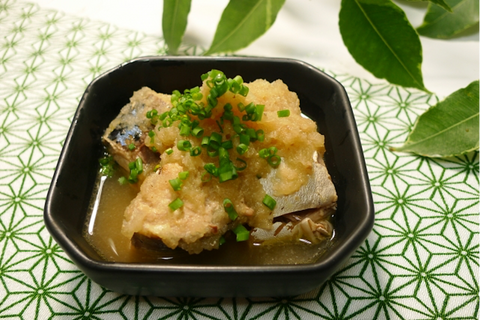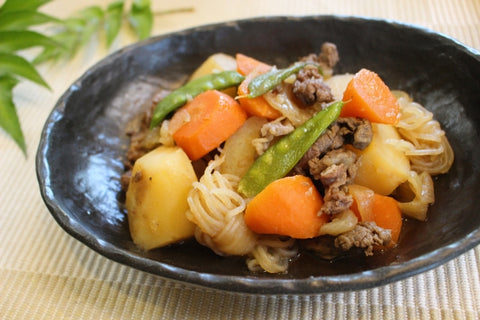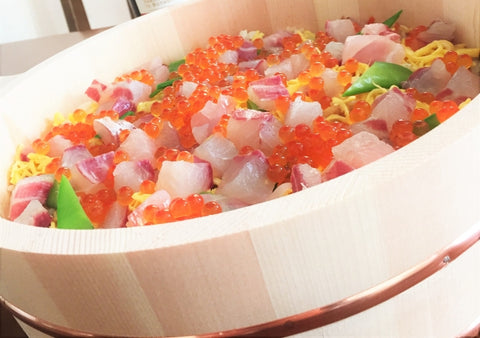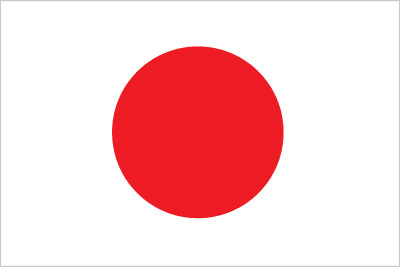
Celebrate with Japanese food Recipes that can be made in Germany
This year, let's celebrate at home instead of going to restaurants, but what should we make ... ?
When you try to make a different menu than usual, you get lost in what to do. So why not try making Japanese food that you can easily make at home? In this article, we will introduce Japanese recipes that are perfect for celebrations!
Sushi is popular with both Japanese and Germans! Unlike nigiri sushi and makizushi, temakizushi can be easily made and eaten at home. You can choose not only sashimi, but also meat and vegetables, so everyone from children to the elderly can enjoy it.
・Seafood: salmon, tuna, salmon roe, canned tuna
・Meat: grilled meat, minced meat, ham
・Vegetables: cucumber, avocado, corn, green onion
・Others: Atsuyaki egg, natto, sesame seeds, cream cheese
In addition to the ingredients commonly used in Japan, you may find ingredients that go well with vinegared rice and grilled seaweed! It's fun to spend time thinking about what to put in.

1 . Lay plastic wrap on a Tupperware or a mold, and cover it with mackerel, salmon, kinshi omelette, etc. ( what you want to put on top ) .
2 . Spread the vinegared rice over the ingredients
( If you want to add more height, layer the ingredients and the vinegared rice once more .)
3 . Cover with plastic wrap and press firmly.
4 . Remove from the mold while still wrapped.
You can change the taste and appearance according to your taste, such as changing the ingredients, or mixing green laver into the rice to give it a different color. You can use any type of mold, such as the box that the wrap was in, or the star or flower mold used to cut candy.
By the way, you can use white rice instead of vinegared rice, but you can also mix sesame and shiso into the white rice to add flavor.

In Germany, there is a dish similar to tonkatsu, but I don't think there are many opportunities to eat a dish like fried chicken. If you really want to eat freshly fried chicken , it might be a good idea to try making it yourself.
1 . Add grated ginger, grated garlic, sake, soy sauce, and sesame oil to the chicken cut into bite-sized pieces, and mix lightly.
2 . Refrigerate for 10 to 15 minutes to allow the flavors to infuse
3 . Sprinkle with potato starch and fry in oil to complete
A simple recipe is given above. You can also arrange it by adding black pepper to make it a little more mature. If it is troublesome to prepare various ingredients, you can make it quite easily by using fried chicken powder .

It's kind of a relief to have simmered dishes such as nikujaga and chikuzenni on the dining table. Especially in the cold season, I want to eat simmered food to warm my body and soul .. !
By adding seasonings to a large amount of dashi and simmering it over low heat for a long time, the meat becomes tender and the vegetables become sweet.
The ratio of water, mirin, soy sauce, and sake is 5 : 1 : 1 : 1 , which is the golden ratio of simmered food!

Shiraae is a Japanese-style aemono, in which the tofu enhances the flavor of the ingredients. How about trying it as a main dish?
Ingredients: tofu, carrot, konjac, spinach
1 . For silken tofu, wrap in kitchen paper and drain well.
2 . Boil the shredded carrots, konjac and spinach, then cool.
3 . Put all ingredients in a bowl, ground sesame, soy sauce, sugar, and salt.
( It is important to remove the moisture from the tofu and spinach! )
summary
Here are some recommended Japanese recipes for celebrations. When you eat it, you will feel nostalgic and feel Japan.
Seasonings such as soy sauce are widely used in Japan, and by combining them, you can make Japanese food using familiar ingredients even if it is difficult to obtain the same vegetables and seafood as in Japan. please give me!
Online shops are very convenient when there is no Japanese food store nearby or when it is difficult to go out.
Based in Germany, our online shop sells natto, soy sauce, and various Japanese food ingredients and seasonings.
Shipping within Germany is free for purchases over 50 euros, so please take a look.




















































